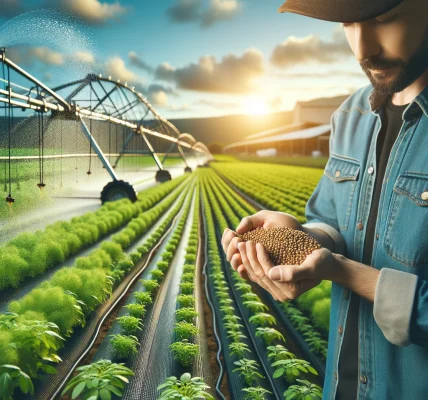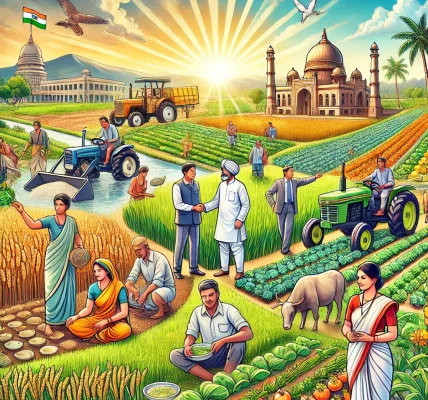Introduction
Agriculture is the backbone of many economies, and to support farmers, governments worldwide have launched various initiatives. In India, numerous government programs provide free seeds and farming equipment to help small and marginal farmers increase productivity and reduce costs.
In this blog, we will explore how farmers can access free seeds and agricultural equipment under government schemes, eligibility criteria, and the step-by-step application process.
Why Government Provides Free Seeds and Equipment
The government offers free seeds and equipment to farmers for several reasons:
- Encourage Sustainable Agriculture: Promote organic and eco-friendly farming methods.
- Boost Agricultural Productivity: Improve crop yields and reduce dependency on costly inputs.
- Support Small & Marginal Farmers: Provide assistance to those who cannot afford quality seeds and modern equipment.
- Enhance Food Security: Ensure higher agricultural output to meet growing demand.
- Promote Technological Adoption: Introduce modern machinery to improve efficiency in farming.
Key Government Schemes Offering Free Seeds and Equipment
1. Pradhan Mantri Kisan Samriddhi Yojana
- Objective: Support small farmers with free quality seeds and essential equipment.
- Key Benefits:
- Distribution of high-yield variety (HYV) seeds.
- Supply of low-cost farm tools.
- Eligibility:
- Must be a small or marginal farmer.
- Land ownership proof required.
- Registered under the government’s farmer database.
2. Rashtriya Krishi Vikas Yojana (RKVY)
- Objective: Improve agricultural productivity through seed distribution and mechanization support.
- Key Benefits:
- Free distribution of improved seed varieties.
- Subsidized tractors, plows, and irrigation systems.
- Eligibility:
- Open to all farmers.
- Must apply through the state agriculture department.
3. National Food Security Mission (NFSM)
- Objective: Promote food grain production through free seeds and modern equipment.
- Key Benefits:
- Free seeds of wheat, rice, pulses, and coarse grains.
- Assistance in purchasing seed drills, threshers, and cultivators.
- Eligibility:
- Farmers cultivating food grains.
- Must belong to a rural agricultural community.
4. State-Specific Agricultural Schemes
Several states have their own programs for farmers. Here are a few examples:
- Maharashtra: Mukhyamantri Shetkari Samriddhi Yojana (Provides free seeds and organic fertilizers).
- Tamil Nadu: Amma Bio-Fertilizer Scheme (Offers bio-fertilizers and eco-friendly pesticides).
- Uttar Pradesh: Kisan Beej Anudan Yojana (Provides certified seeds at zero cost).
How Farmers Can Avail Free Seeds & Equipment
Step 1: Check Eligibility
- Visit the state agricultural department website or Krishi Vigyan Kendra (KVK).
- Verify eligibility criteria specific to your region.
Step 2: Register Online or Offline
- Online:
- Register on government portals like PM-Kisan, RKVY, or state-specific agricultural portals.
- Fill in details such as Aadhaar number, land records, and bank account details.
- Offline:
- Visit the nearest agriculture department office or local panchayat.
- Submit a hard copy application with required documents.
Step 3: Submit Required Documents
- Land ownership documents or lease agreement.
- Aadhaar card or voter ID for identity verification.
- Bank account details for subsidy transfers.
- Soil health card (if required for organic farming assistance).
Step 4: Verification & Approval
- Government officials will review applications.
- An inspection may be conducted to confirm landholding status.
- Once approved, farmers will receive free seeds and equipment through distribution centers.
Step 5: Collect Seeds & Equipment
- Approved farmers can visit designated collection centers or receive direct delivery.
- Some states have Krishi Seva Kendras for seed and equipment distribution.
Tips to Maximize Benefits from Government Programs
- Stay Updated: Regularly check government agriculture websites for new schemes.
- Join Farmers’ Groups: Cooperatives and Self-Help Groups (SHGs) can help in better access.
- Attend Training Programs: Many schemes offer free training on seed selection and equipment usage.
- Seek Expert Guidance: Visit Krishi Vigyan Kendras (KVKs) for technical support.
Common Challenges & Solutions
1. Lack of Awareness
- Solution: Government should conduct awareness campaigns in rural areas.
2. Delayed Approvals
- Solution: Farmers should track applications through online portals or visit local offices for updates.
3. Limited Availability
- Solution: Apply early and ensure all documents are in order to increase chances of approval.
Conclusion
The government’s free seeds and equipment programs are a valuable resource for farmers. By taking advantage of these initiatives, farmers can improve productivity, reduce costs, and enhance agricultural sustainability. Staying informed and following the correct application procedures ensures maximum benefits from these schemes.
By utilizing these programs effectively, farmers can contribute to a stronger agricultural sector and better food security for the nation.




